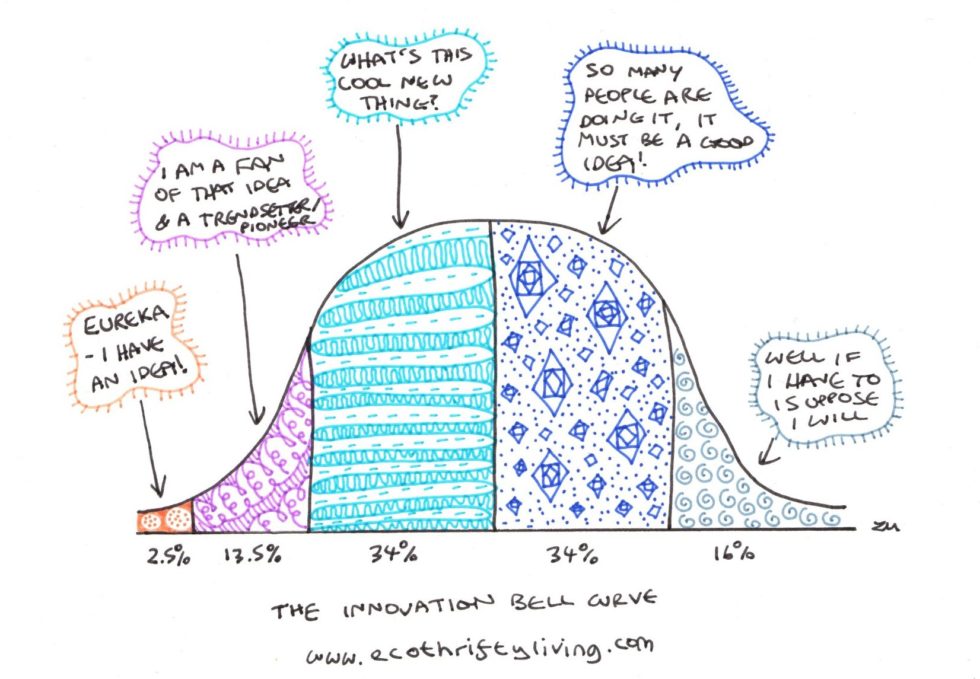
Eco living – how to overcome resistance to it!
Have you encountered resistance to eco living? I think it is likely that most people who have decided to change their ways and become more eco-friendly encounter resistance at some point from other people.
It could be in the form of negative comments or it could be in the form of them blocking you in trying to be more eco-friendly. They might also show no interest in changing even after you have given them a load of good reasons why they should.
So what can you do about it? My answer is to consider your message carefully.
Eco – living product swaps
Let’s say for example on your eco-living journey, you have decided shampoo bars are much better than liquid shampoo. You want to encourage all your friends to try them too.
You could tell them that:
- it is wrong to buy and throw away plastic bottles and tell them about a myriad of other problems with liquid shampoo
- you won’t be using shampoo in plastic bottles any more, you will be switching to soap bars and you think they should too.
Some people will take your point on board. Other people may feel that you are trying to pressure them into making an eco-living change they aren’t sure about and feel totally put off by it. Although there are good arguments for switching to a soap bar, there are also good arguments for not doing it.
Pros of liquid shampoo:
- They really like the shampoo they use now
- They have fine hair, or greasy hair and very particular requirements about what they use on it and have discovered the perfect shampoo after years of experimenting.
- There are no shampoo bars for sale in the places they usually shop.
- Maybe they know something about shampoo bars that you don’t, to do with their eco-friendly credentials, or maybe they are cynical. Sometimes things that appear to be more eco-friendly options turn out not to be.
Or you could:
- Ask them what their hair type is. Then buy them a really nice shampoo bar as a gift suitable for their hair type. This way you are letting them decide for themselves what they think about shampoo bars, by having one to try out if they want to!
- Try out a shampoo bar yourself and tell your friends what you thought about it. Then ask them what they think of the idea without pressuring them into using one at all.
- You could also combine point 2. with buying them a voucher for a shop that sells shampoo bars and other things, when it is their birthday next.
Although the easiest option is to tell people why you think they should change their ways, it often doesn’t work. This is because they have objections. If you don’t know what their objections are, you can’t address them. You also don’t want to make people feel pressured, because we all hate those sales people who hold us hostage and won’t let us go until we have bought their product! It often has the opposite effect to the one intended, putting people off from making a change at all.
Give people solutions not problems, that take into account their objections and that are fun! That is likely to have a far better effect in influencing the people around you.
Eco-living habit changes
Not all eco-living changes that you make are a product switch though. Some are a habit switch e.g. not wasting bread . You can’t give someone a new habit, in the same way that you can give them a thing. So what can you do in this situation?
Again in this situation action speaks louder than words. Make the eco -living changes yourself, test them out and see how you get on. Why should someone else make a change that you haven’t tried and tested yourself?
Another good idea is to take on a challenge e.g. Zero Waste Week and invite other people to join you! Zero Waste Week is the first week in September every year. Asking other people to join in a challenge with you is non-threatening, because you aren’t telling them what to do, you are asking them for company on a journey of discovery!
If you’ve done all that and it hasn’t made any obvious difference, don’t step up your efforts and don’t give up! What’s that supposed to mean? What I mean by that is don’t try harder, because you might put them off and do keep doing what you believe to be the right thing. Don’t succumb to peer pressure to go back to your old ways, stand firm and keep going.
Diffusion of Innovation
At the top of this article I have shared a picture of a bell curve, which is based on Everett Rogers Diffusion of Innovation theory. It illustrates that we don’t all adopt a new idea at same time.
- 2.5% of people are innovators and come up with an invention/ an idea/ a new way of doing things.
- 13.5% of people are called early adopters. These people hear about a new idea or product and are on board straight away. These people may include first investors and customers
- 34% of people are in the early majority. It’s becoming more mainstream now and a lot more people are doing it/ buying into it.
- 34% of people are in the late majority. Not only is it mainstream, but by now it has been widely tried and tested, it is more readily available and accessible. They can have confidence that it works/ fills a need well/ is a good idea. Or perhaps they realise that, they will soon have no choice but to make the change.
- 16% of people are the laggards – the people who are very slow to make a change. Or maybe they never wanted to make a change at all but now have no option because the old way has become obsolete.
Bear this bell curve in mind when you feel like your actions are having no effect on people. You might not be able to see the seed of change that you have planted in their minds. But it doesn’t mean it isn’t there. Keep watering it, by continuing to act! You might be surprised by them and see them making a change later down the line.




